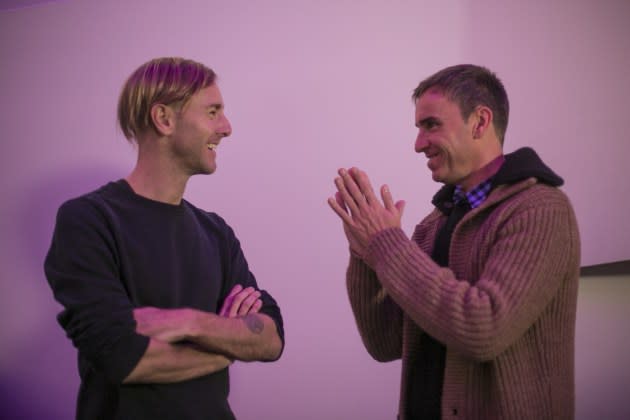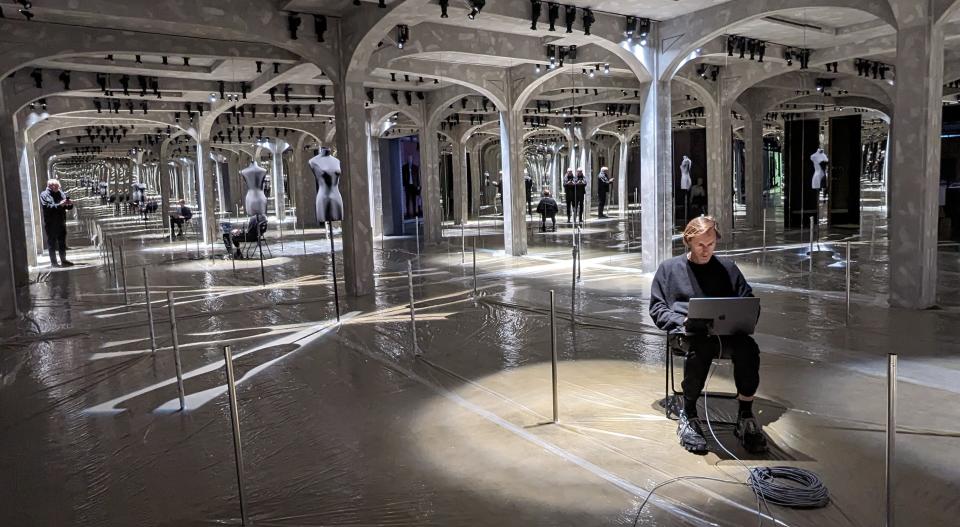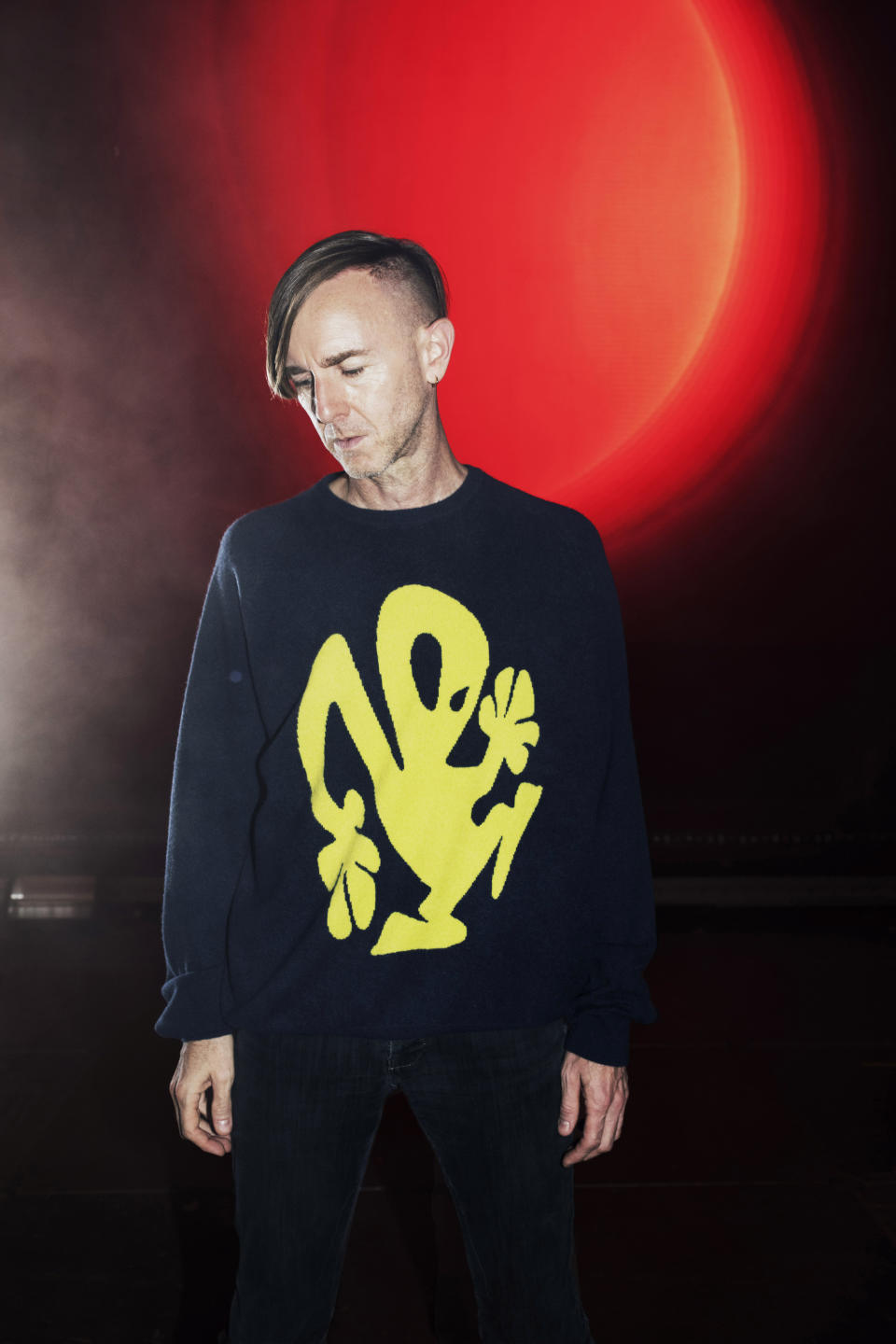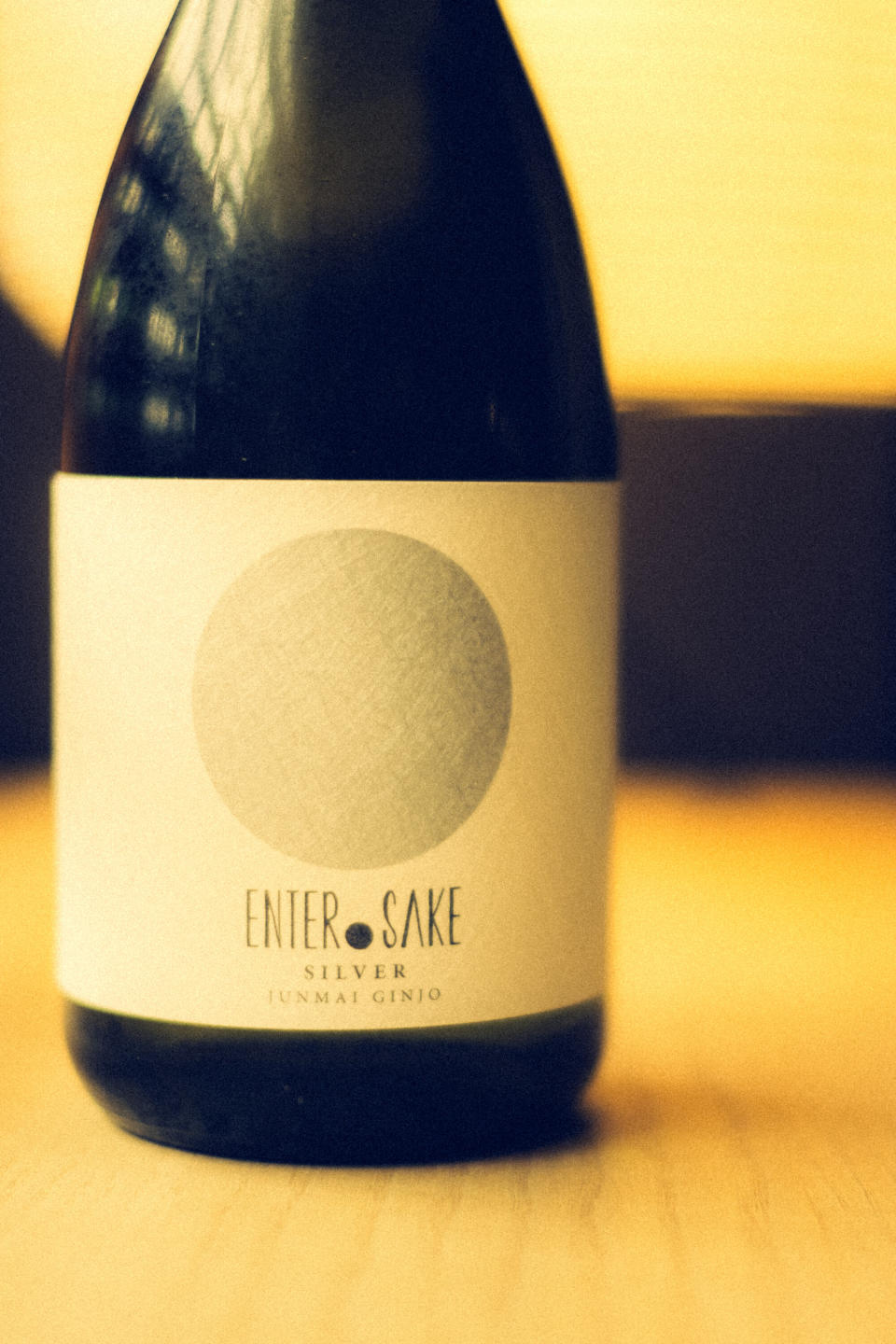Veteran Producer Richie Hawtin on Techno’s Recent Vibrancy and the Return of Plastikman

Leave it to Richie Hawtin, who has been at the vanguard of electronic music for decades, to provide succinct and evocative descriptions of the signature fashion look of the techno scene — and the perfect alcoholic beverage to go along with it.
“I think the image of techno has always been very stripped down, minimalistic and devoid of logos and more about silhouette,” he muses. “And I think that silhouette harks back to the shadows of the dark clubs, strobe lights and smoke machines.”
More from WWD
As for that drink, Hawtin was crowned an official Sake Samurai by the Japanese Sake Brewers Association about 10 years ago, and has also earned the Advanced Sake Professional Certification.
The British Canadian musician fell in love with the fermented rice liquor during his first trip to Japan in 1994.
“When you’re on the dance floor, and you just feel everyone is somehow in sync, you’re like, ‘Wow, this just feels great. This music feels great.’ And sake gave me that same feeling from the very beginning,” he relates over Zoom from Lisbon, Portugal, his newest home base. “I hope this doesn’t sound corny, but I’m convinced that sake vibrates at the same frequency as electronic music.”
Soon enough he was planning his gigs in Japan so that he could visit different breweries and further educate his palate.
Hawtin says many “techno kids” like him from the ’80s “were inspired by the future and spaceships and high technology.” Japan represented futurism, in no small part because much of the machinery used to make early electronic music came from Roland Corp. and Yamaha, both Japanese companies.
Austere electronic beats remain Hawtin’s passion, which has attracted fashion fans headlined by designer Raf Simons, who conscripted Hawtin to soundtrack his COVID-19 era collection films when he became co-creative director of Prada, and the recent Pradasphere II exhibition in Shanghai.

Hawtin’s first encounter with Simons was at an early gig in Ghent, Belgium, when someone pointed out that the young guy grooving behind the DJ booth throughout his set was an edgy menswear designer from Antwerp.
“Five or six hours later, when the lights came up, he hadn’t moved. He was just listening and dancing a bit and I knew from that moment that Raf understood, loved and appreciated techno music, and somehow was sucked into the groove that I was doing,” Hawtin marvels. “I know that it takes a special person to understand some of the minimal things that I’m doing: There’s not much there and that either touches somebody or it doesn’t.”
When he was creative director at Dior, Simons commissioned Hawtin to perform at a fundraiser for the Guggenheim museum in 2013, which ultimately inspired him to create his sixth studio album under his Plastikman guise — his first in a decade.
“We know each other since a long time. There is a mutual admiration, and we became friends,” Simons says. “So the way we collaborate is very easy-going. I explain what we are doing and aiming with the collection. And then I let Richie free. He is a composer, the way a classic music composer works, in my opinion. That is also the quality, a rarity in his music genre.”
Hawtin’s music has a special effect on Simons: “It brings me in a trance of calm.”
Hawtin continues to DJ about 80 times a year, and he recently started working on his seventh Plastikman album, which seems to be linked to a possible project with IMAX theaters. “IMAX is a beautiful screen. But what people don’t realize is that it’s also a beautiful sound system. And so there’s a project ongoing, which utilizes the sound of IMAX to create a new type of experience,” he teases.
Hawtin dabbles in fashion occasionally. Around 2010, he marketed a Made in Japan fashion line with his designer friend Isolde Richly, hinged on cool black T-shirts. “Unfortunately, it didn’t last that long because we quickly realized how intense the fashion world is,” he says, alluding to the onerous financial demands and the sped-up calendar.
“The idea of that fashion line was to give the techno community an image for them to own,” he explains. “This was a fashion brand that came from the techno community, not just marketed toward them.”
In his view, music and fashion are closer than ever since social media has “allowed kids to understand the nuances of music and fashion more.…So maybe I should relaunch it now,” he muses with a chuckle.
More recently, he collaborated with Swiss cashmere label Frenckenberger on a limited-edition capsule of sweaters emblazoned with his alien-like Plastikman logo. He is wearing one during the interview.

In Hawtin’s view, techno’s early, underground days were about “losing yourself in dark rooms…so it was was kind of devoid of fashion, and devoid of narrative. It was just a pure kind of emotion. But I think that that changed over time. It had to grow and find its own image to transmit itself to a new generation.”
While Hawtin is content working in a musical genre that has long flown under the radar, he’s pleased with techno’s surging popularity among young people, who have adopted a style he describes loosely as “futuristic goth.” Elements include big jeans and rave pants, touches of metal and hints of punk.
“How do you dress a music that has always been independent, a bit DIY and not very popular?” he asks. “In the beginning, we were all just kind of a bunch of renegade kids trying to make music and play music in abandoned warehouses where nobody really looked the same.
“Techno is definitely more fashionable now, there’s a much stronger look.”
Brands that dabble in the scene include 44 Label Group, helmed by German techno artist Max Kobosil, while designers in the futuristic goth vein include Rick Owens and Ann Demeulemeester, Hawtin says.
The musician cuts a stylish figure with his fine blonde hair cut on a dramatic angle, and his slender flame cloaked in black. His standard uniform for DJ gigs consists of Prada pants, a techno T-shirt bearing logos or releases from his back catalogue, and “big, chunky Prada shoes.”
“Because when you’re standing on stage, and you’re performing, you need to feel strong and solid as possible,” he says.
Hawtin also collects technical outerwear, and was an early fan of a brand called Sabotage designed by Paul Harvey, who would go on to design for Stone Island and C.P. Company. He also counts jackets from Rick Owens and Prada in his wardrobe.
“I’m such still a jeans and a T-shirt guy, even if they’re black,” he says. “You throw on a cool jacket and you’ve got a look.”
While recording new Plastikman music requires that he get into a certain headspace, Hawtin says he thrives on the “immediacy of DJing, getting on stage with new music and just kind of pummeling the expectant dance floor in front of me.…There’s an energy that really brings techno forward from that.”
He also forges ahead with sake-related business ventures. He continues to market his own brand, Enter.Sake, in Europe, and he operates a bar in Berlin called Sake 36, numbered after the district in Berlin. The watering hole on Reichenberger Strasse will showcase various styles of sake and he plans to open a similar establishment in Lisbon.
His idea is to create a space that’s “fun and cool for 20 and 30 year olds” that takes sake outside its usual context or sushi restaurants and noodle bars.

Hawtin says he’s driven to promote sake not only because he loves the taste and the feeling it gives, but because he’s alarmed that consumption in Japan is going down, endangering breweries with hundreds of years of know-how.
“Give sake a chance with a nice group of people. It’s such a great, warm social drink,” he enthuses, noting that the bottle needn’t be expensive. “You’ll see how the vibe changes.”
Among his favorite places in the world to sample sake outside of Japan are Decibel in New York and Umu Restaurant in London, which he says boasts one of the most extensive sake menus in Europe.
And he’s not the sole musical crusader for sake, noting fans include Iranian American DJ Dubfire and Pharrell Williams and Nigo, who have teamed up on bespoke blends under Nigo’s Human Made brand.
“If you start digging around, you’ll find sake becoming much more commonplace on the riders of artists and DJs,” he says.
Best of WWD

 Yahoo Lifestyle
Yahoo Lifestyle 
